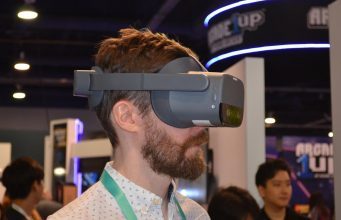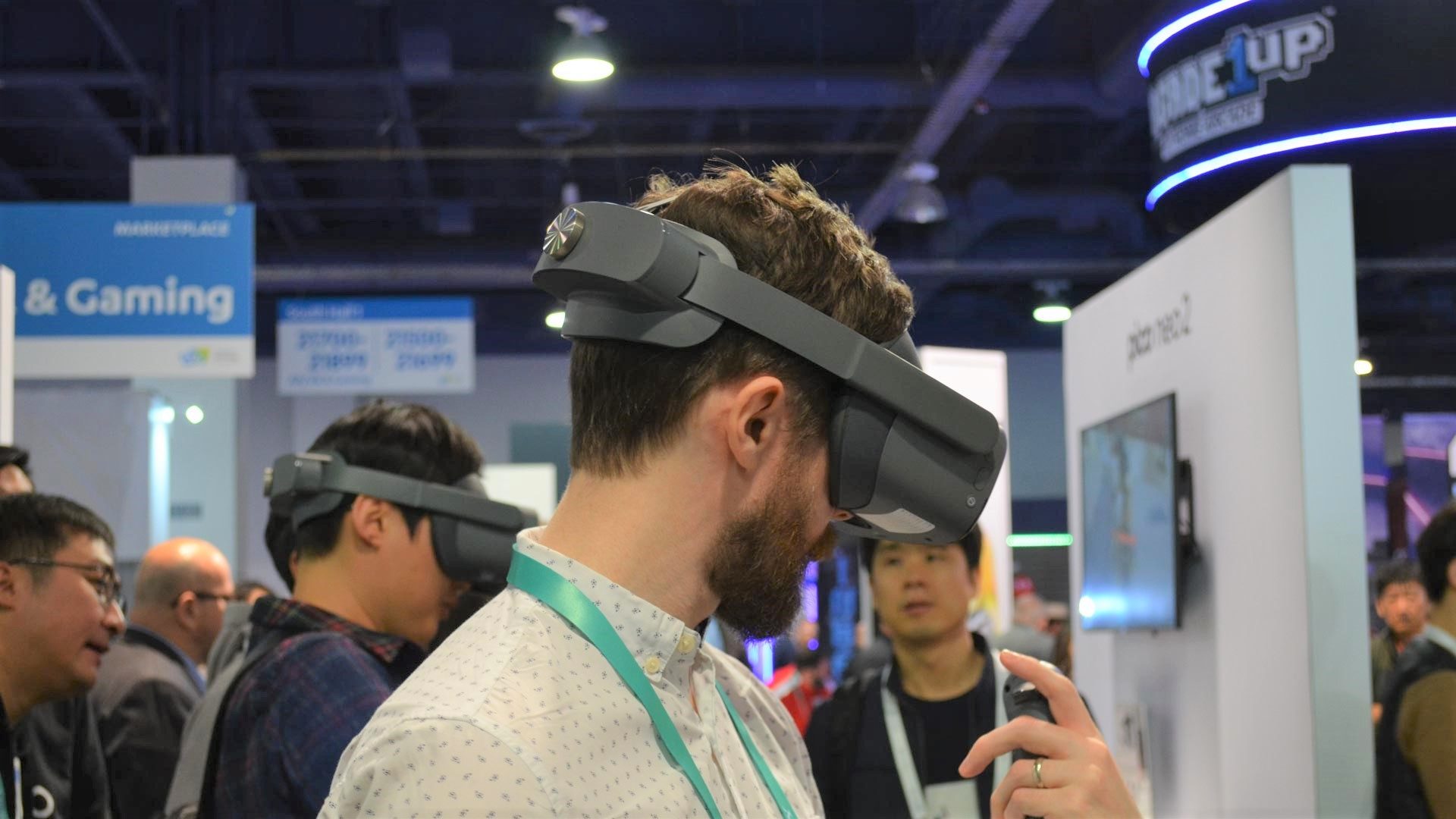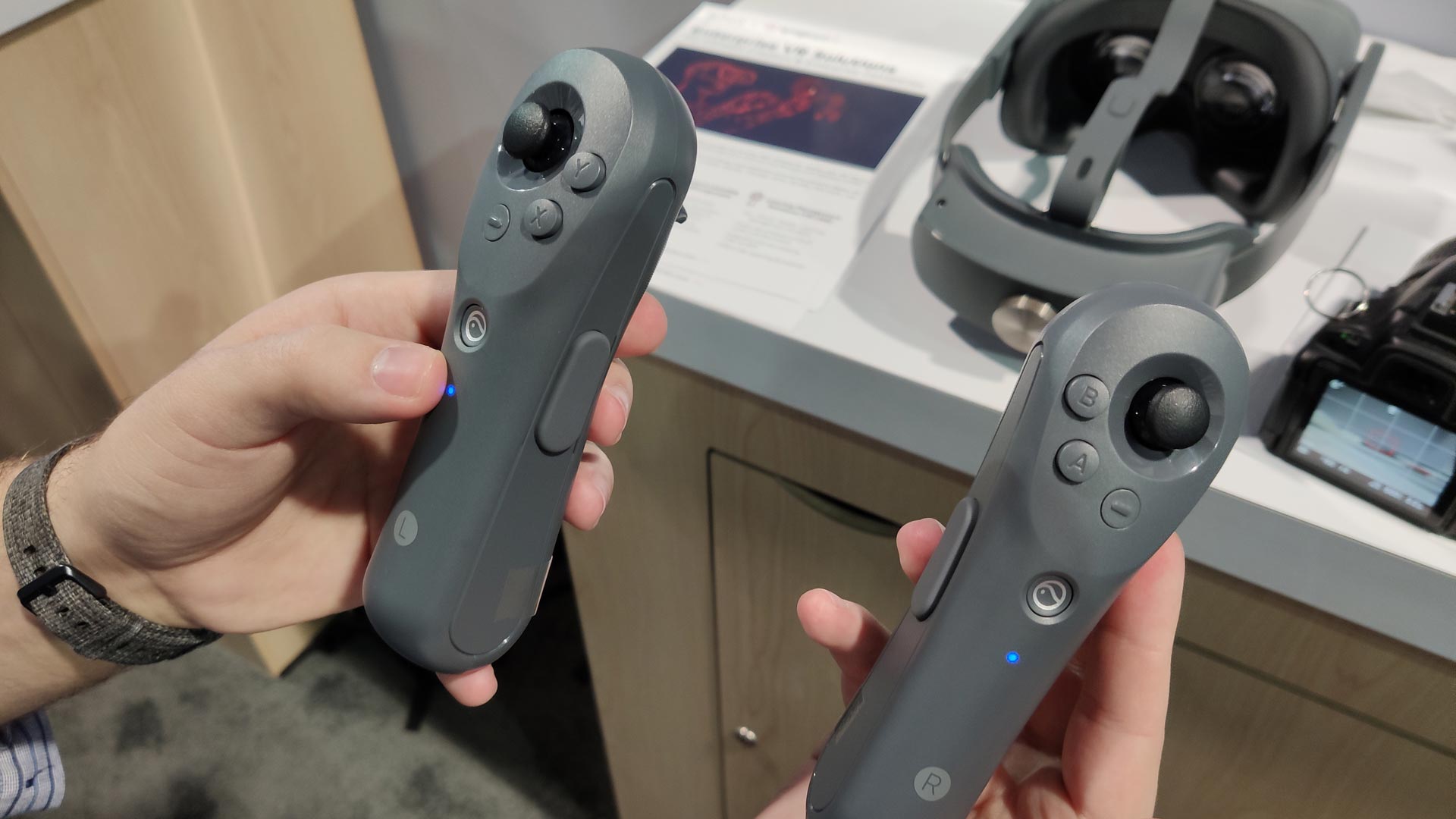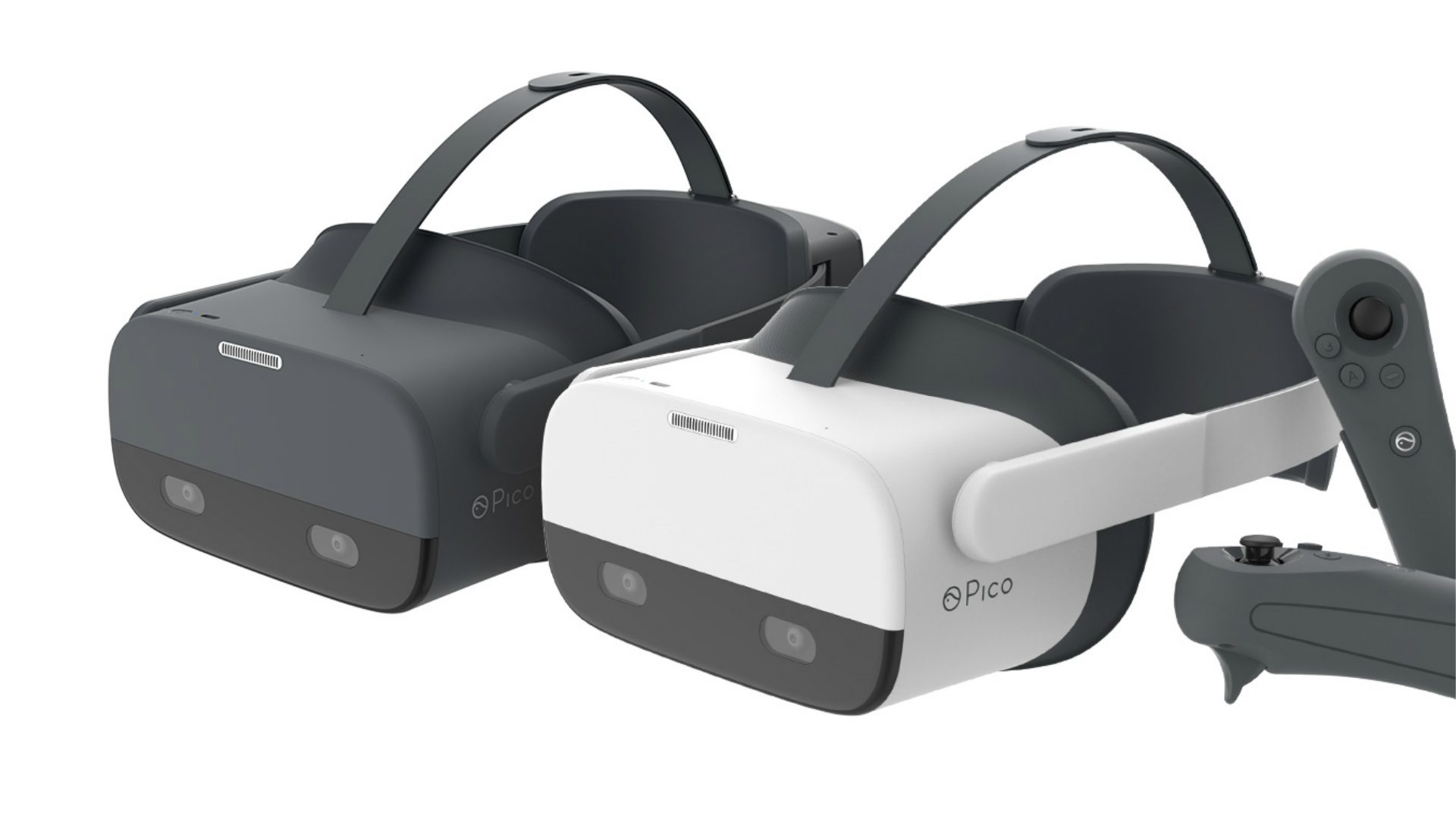
At CES this week, Pico unveiled a pair of its latest standalone VR headsets, Neo 2 and Neo 2 Eye. While the company is targeting enterprise customers in the West, the Neo 2 line is eyeing up the same hardware category as Facebook’s Oculus Quest, and doing a solid job at that.
The only appreciable difference between the the Neo 2 and Neo 2 Eye is that the latter includes integrated eye-tracking from Swedish firm Tobii. It also comes with slightly more RAM than the standard version to account for eye-tracking as well as a different color scheme; Neo 2 is white and Neo 2 Eye is dark grey. I’ll get to eye-tracking below, but for now let’s talk about the Neo 2 line in general.
Pico Neo 2
The first thing I noticed about my short time with Neo 2 was how comfortable and well-balanced it was—more so than Quest’s front-heavy design—thanks to Pico’s inclusion of a rear-mounted battery, which is incorporated with the headset’s ratchet system with a single knob. An overhead strap is a rubbery affair that has a few fixed length settings, something I wish was instead a bog standard velcro strap for easier and more accurate fitting, but it did the job.

As a company, Pico has been pretty cognizant about weight distribution in the past with its 2016-era Neo headset, which cleverly housed the battery in a Nintendo-style tethered gamepad, so it’s nice to see the company is still focused on keeping one of the heaviest pieces of a standalone VR headset in good balance.
The second thing I noticed was its slightly mushy, albeit entirely serviceable optical positional tracking. To its credit, Neo 2 wasn’t jittery or too lurchy like the company’s previous Pico Neo from 2017, putting Neo 2 in the ‘acceptable’ range for tracking.
My demo didn’t quite live up to Oculus Quest, which by all accounts is the bar to reach when it comes to inside-out tracking for head and hands, but with a useful guardian system and pass-through capability to boot I was mostly satisfied Neo 2’s 6DOF tracking. Granted, the CES show floor’s bright lights and bustling crowd make for a challenging tracking environment, so I’ll have to reserve my ultimate judgement until I see it in a wider range of environments.
By this point, you’re probably wondering whether this really a hands-on piece or a straight-up comparison to Quest, which sells to consumers starting at $400. And you’d be right in saying its a bit of both. The only other real device in the product category currently is HTC Vive Focus Plus, which hasn’t presented much competition for Quest in the West. That said, Pico Neo 2 and Neo 2 Eye are set to launch at some point in the West to businesses for $700 and $900 respectively, both with 128GB internal storage. Meanwhile, Facebook charges $1,000 for the 128GB Quest through it’s ‘Oculus for Business’ program.
While there’s important platform considerations not to be ignored, here I’m looking mostly at how Neo 2 compares to Quest from a hardware and capabilities standpoint.
Tracking aside, what did fare remarkably well was Neo 2’s 6DOF controllers. Although it doesn’t have the precision or finessed ergonomics of Oculus Touch, its range of motion and overall reliability seems more than acceptable for the headset’s enterprise-focused use-cases.
Unlike Quest, which uses inside-out tracking to track both the headset and Touch controllers, Neo 2’s controller tracking is based on a NDI’s Atraxa controller platform which fuses data from an on-board electromagnet (EM) and inertial measurement unit (IMU), resulting in a positionally tracked controller that doesn’t suffer from occlusion (but may suffer from sources of EM interference). I didn’t get a chance to put it through the ringer with something like Beat Saber (an easy benchmark for latency and accuracy), but it felt more than acceptable throughout.

The controller’s plastic feels a tad on the cheap side, and button placement isn’t the greatest, although I was glad to see thumbsticks instead of touchpads here. Ergonomically it isn’t anything to write home about; it’s more wand-like and uses a ‘click-to-grip’ button, whereas most headsets have moved toward a ‘hold-to-grip’ trigger.
Integrated stereo speakers are very similar to Quest’s (hidden in the head-band), though I couldn’t get a good feel for them considering the noisy show-floor environment.
On both Neo 2 and Neo 2 Eye I played Angry Birds VR: Isle of Pigs (2019), which I know quite well from my review of the game. Although frame rate wasn’t at all where it needs to be right now on that game in particular, I suspect the Neo 2’s Snapdragon 845 would be more than up to the task after a little bit of headset-specific optimization; in this case it seemed that Pico just grabbed for the nearest game they could to have something to show at CES.
The headset’s Snapdragon 845, which should be capable of running VR apps at an acceptable frame rate for the 3,840 × 2,160 (1,920 × 2,160 per lens) LCD panel, which is clocked at 75Hz. For comparison’s sake, Oculus Quest offers dual panels with a per-lens resolution of 1,440 × 1,600 at 72Hz, driven by the more demure Snapdragon 835.

Neo 2 uses a single panel with software-based interpupillary distance (IPD) adjustment, something that Pico says should serve users with an IPD of between 55mm–71mm. My IPD is a smack down the middle at ~63mm, so I didn’t have any issue, but a physical IPD adjustment is greatly preferred for its ability to help a wider range of people get their eyes into the sweet spot of the lens.
Pico Neo 2 Eye
Then there’s the Neo 2 Eye, which integrates Tobii’s eye-tracking tech. I had the opportunity to go through the Neo 2 Eye demo, which was nearly identical to the one I tried at Vive Pro Eye (which also uses Tobii eye-tracking) at CES 2019.
One of the big benefits Pico is trumpeting for Neo 2 Eye is its foveated rendering, which is supposed to improve performance by only rendering the scene at full resolution where your eye is looking, while reducing resolution in the periphery. Unfortunately the lower-resolution in the periphery was more noticeable than I would have hoped for an eye-tracked solution. Ideally you aren’t supposed to notice the edge of the high-resolution center, which should be locked onto the user’s fovea (the center view of the eye which sees in high detail). It was simply too inaccurate a demo for the illusion to work, which is a shame because we’ve seen remarkably solid Tobii eye-tracking in other headsets.
Though the foveated rendering was easily noticeable, it did what foveated rendering is designed to do: allow for higher frame rates and more complex scenes.
To that effect, I was told the headset was using a generalized eye-tracking profile, which was a possible reason why it wasn’t offering the sort of accuracy I’d seen in Tobii’s tech on the PC-tethered Vive Pro Eye. Again, it’s something I’ll have to test in a less hectic environment where we can go through a proper eye-tracking calibration process and see if Pico was truly able to use Tobii’s tech to its fullest on the mobile VR platform.
And while we’re looking forward to testing the Pico Neo 2 in the conditions of our choice, the hardware seems an admirable entry in the 6DOF standalone category. In may not match Oculus Quest in a few categories but businesses looking to get a solid, lower cost 6DOF standalone with slightly more horsepower, resolution, and the option of eye-tracking wouldn’t be remiss by casting a curious gaze at Pico’s latest and greatest.
The post Hands-on: Pico Neo 2 Could Be the Next Best Standalone After Quest appeared first on Road to VR.
from Road to VR https://ift.tt/2NcirRw
via IFTTT
No comments:
Post a Comment